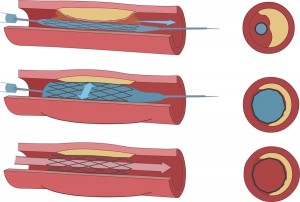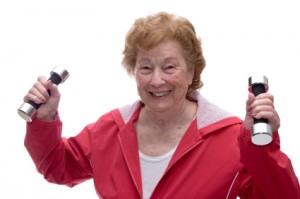Over the years I noticed that there are two approaches to heart disease that people and physicians seems to subscribe to.
1.The conventional approach to heart disease
The patient essentially ignores health advice, may smoke cigarettes and eat in a lot of fast food restaurants. People who do not care about their heart drink sodas, eat lots of sugar, starch and processed foods. They may think that they are invincible. Famous politicians have subscribed to this type of approach including former vice president, Dick Cheney.
But the big surprise comes when acute chest pain hits and an ambulance has to be called. We are lucky in the industrial countries where a 911 service is available. You call that number when in distress and an ambulance with all the modern equipment will rush to you. The problem though is that you have neglected your arteries for all those years and it is likely that one or two of the three coronary heart vessels are severely narrowed so much that your heart reported chest pain. This pain signals that one area of the heart muscle was not getting enough oxygen and nutrients.
On arrival at the hospital the emergency physician sees you. Nurses put monitors up, attach electrodes to you, and IV-lines are put into your veins, just in case things get worse and they would need to give you quick life-saving medicine intravenously. They have also given you an oxygen mask, and after 30 minutes or so you feel much better. A cardiologist has been called in by the emergency physician and will assess you.
This will very likely be the verdict: “We have to do a coronary arteriogram where I advance a thin catheter through your femoral artery backwards to where the coronary arteries originate from. We can then study each coronary artery separately and determine whether an angioplasty needs to be done.” Upon your questioning he explains that an angioplasty is a procedure where a catheter is advanced through a new clot that often forms during a heart attack and a stent is left behind that will keep the previously blocked off coronary artery open.
Within an hour the procedure will be completed. The cardiologist will explain that he found significant narrowing, such a san 85% narrowing in the anterior descending coronary artery and a second lesion in the right coronary artery with maybe 55% narrowing. He has stented both of these arteries successfully. But he warns you that the stents may close off, if you are unable (or rather unwilling) to change your lifestyle. He also will be very specific with what he meant: Quit smoking immediately, get into a regular exercise program and adopt a strict heart healthy diet like the Mediterranean diet. They would keep you overnight just to observe your heart rhythm and blood pressure. In the morning, if everything is OK he will likely discharge you.
Comment: Unfortunately this scenario is all too familiar to me having worked as a family physician doing my rotations as an emergency physician in a community hospital for 16 years. I found that people tended to NOT think preventatively unless they were forced to. When an acute event like a heart attack happens, a higher percentage of people is committed to prevention, but medical people call this “secondary prevention” as this prevention was only started after a close call. Our sample patient above could have developed a serious arrhythmia (irregular heart beats after a heart attack) and suddenly slipped into a coma and died before the interventional cardiologist could have placed the stents.
Primary prevention is much more powerful and this is what I like to cover next.
2. The preventative approach to heart disease
Most people never have to be rushed to the hospital with chest pain. They engage in various ways of “primary prevention”. So, what exactly is this?
They keep very active, like walking or jogging, dancing, working out in a gym, biking or swimming etc.
They also like a healthier than normal lifestyle: eat at home as much as possible, and many adopt to buy only organic food. Why, you may ask? Organic food does not contain insecticide residues that resemble estrogenic substances (so-called “xenoestrogens” which accelerate hardening of the arteries). But organic food also does not contain GMO (genetically modified food). We know enough about GMO now to indicate to us that autoimmune diseases with inflammation of the arteries and the gut can occur. But the full impact on people’s health will not be known for several more decades. So why experiment with yourself? Buy organic instead. It is known to be safe.
Vitamins and minerals can be very useful supplements that also prevent premature aging of our blood vessels.
Anti-aging research has shown that with aging come various hormone defects. Melatonin is one of the first to go (in your twenties). But melatonin tables that are widely available in drug stores and health food stores can come to your rescue: 3mg of melatonin at bedtime will give you a good night sleep and provide powerful anti-oxidant effects. DHEA is an adrenal gland hormone that can be measured in your blood (or in saliva). In case it is low, it can be easily replaced with supplements. In the 50’s or 60’s women and to a lesser degree men will start to show thyroid under-functions. We call this hypothyroidism. Have your TSH and T4 levels checked and talk to you doctor about whether you need thyroid replacement, if the values are off.
It is somewhat more difficult to explain the rest of the hormones. But you know that women get into menopause and men about 10 to 15 years later will hit andropause, which is the male equivalent of menopause in women. An easy way to check this out is by doing a hormone panel from just one tube of spit. Yes, it is a saliva hormone panel I am talking about. For women it is estrogen, progesterone, cortisol, DHEA and testosterone that should be analyzed. For men it is testosterone, DHEA, cortisol, estrogen and progesterone. I am aware that these are the same 5 hormones, but I listed them in the order of importance for women and men. In this blog you find more details about bio-identical hormone replacement.
I have followed a primary heart attack prevention program since 2001 and it seems to suit me well. Just to check things out I had a carotid intima test, which showed no hardening of the arteries. Just two weeks ago my optician took images of the retinal vessels and found hardly any hardening of my retinal arteries. I scored high on a Bruce treadmill protocol in March of 2013 and my lipid VAT values were excellent indicating a low risk for a heart attack.
I have delved into this subject in more detail in my book entitled “A Survivor’s Guide to Successful Aging” (Ref. 1).
Conclusion
Prevention of a disease is always better than curing a disease, this applies to heart attacks as well. While you do something good for your heart, you are at the same time preventing strokes and many degenerative conditions like Parkinson’s disease, Alzheimer’s disease. In addition you also prevent cancer. It really is a good deal!
More information on prevention of heart disease: http://nethealthbook.com/cardiovascular-disease/heart-disease/heart-attack-myocardial-infarction-or-mi/prevention-heart-attack/
Reference:
1. Dr. R. Schilling: “A Survivor’s Guide to Successful Aging“. Paperback through Amazon.com, 2014.
Last edited Nov. 8, 2014











